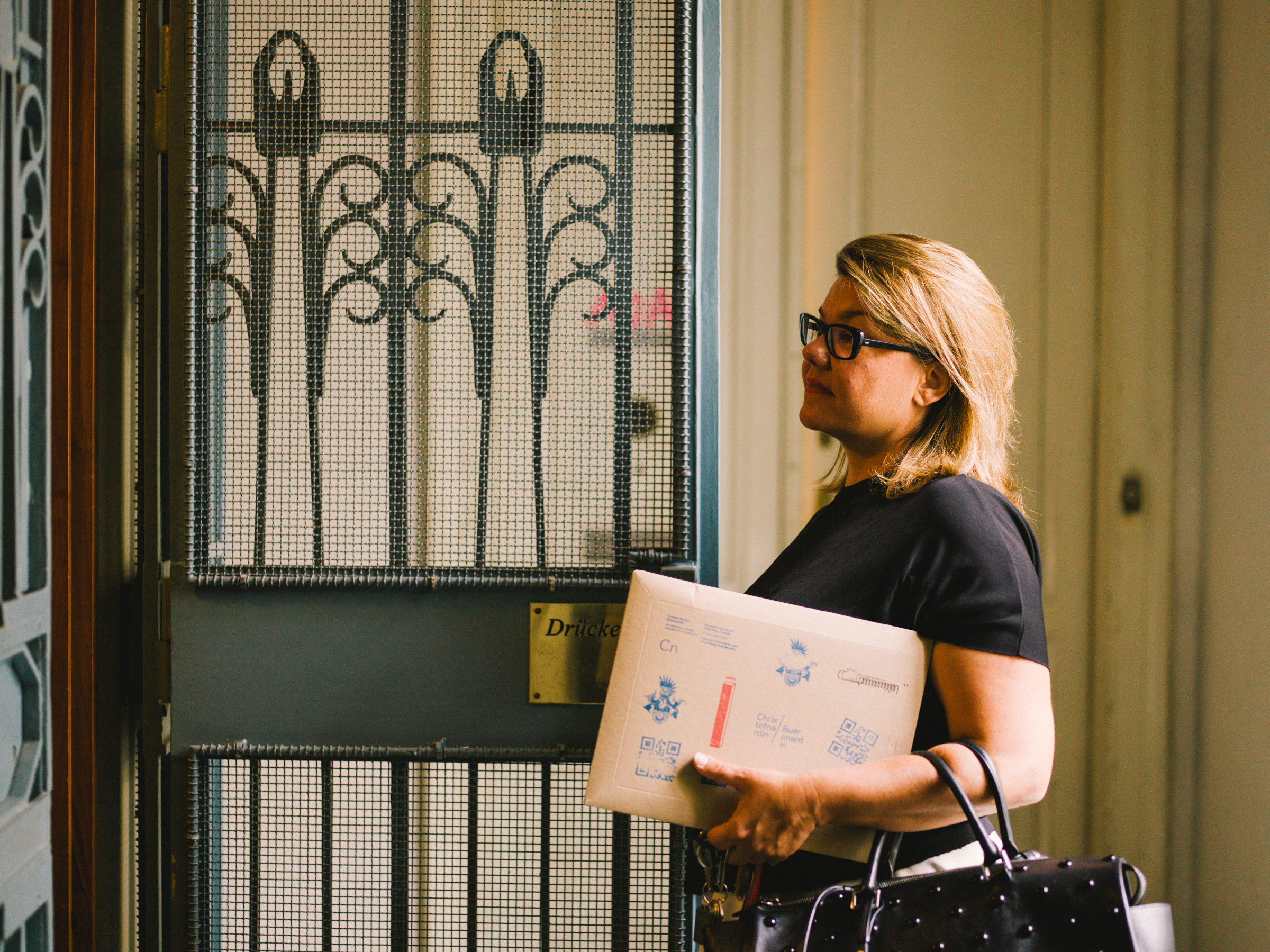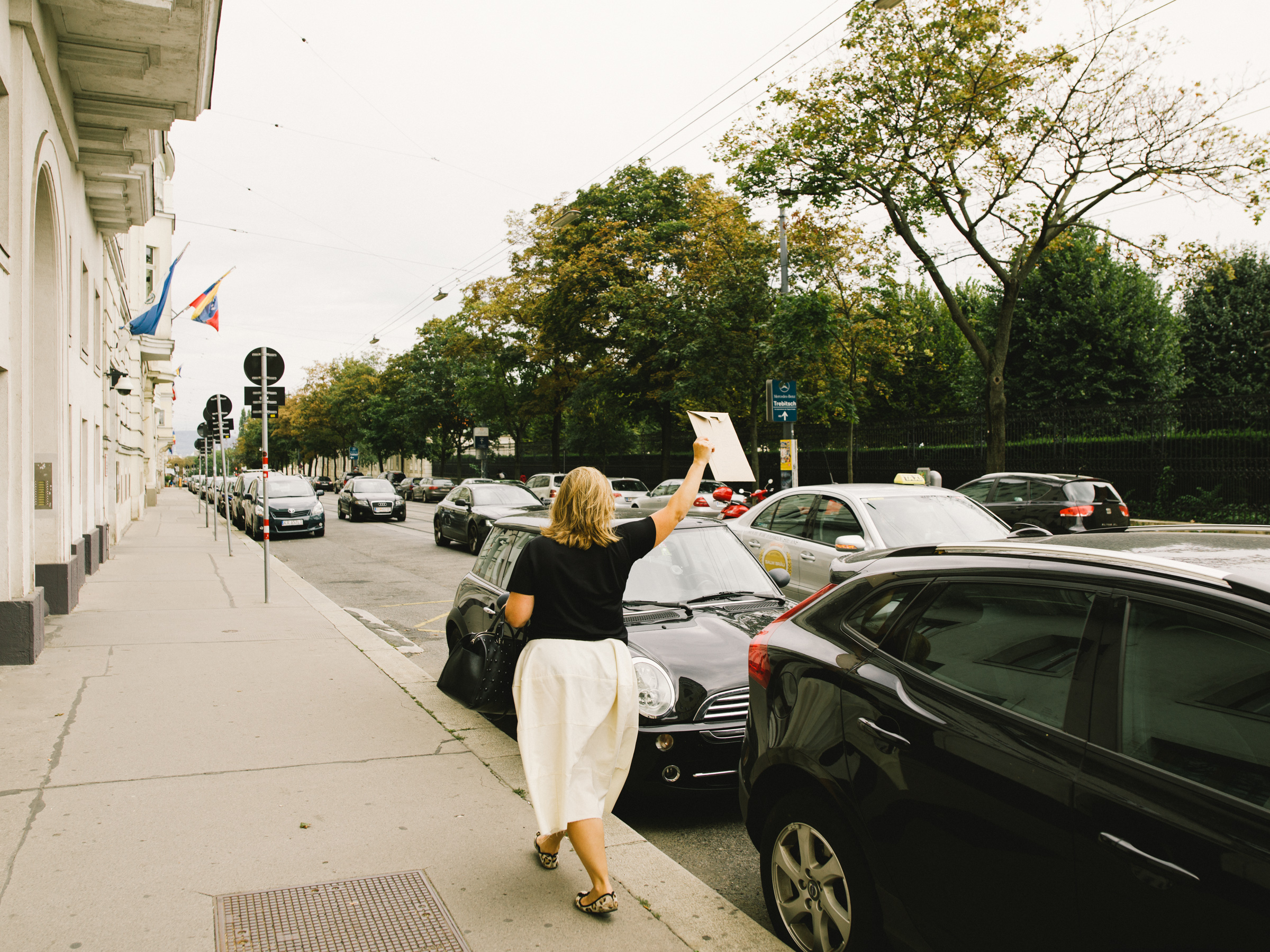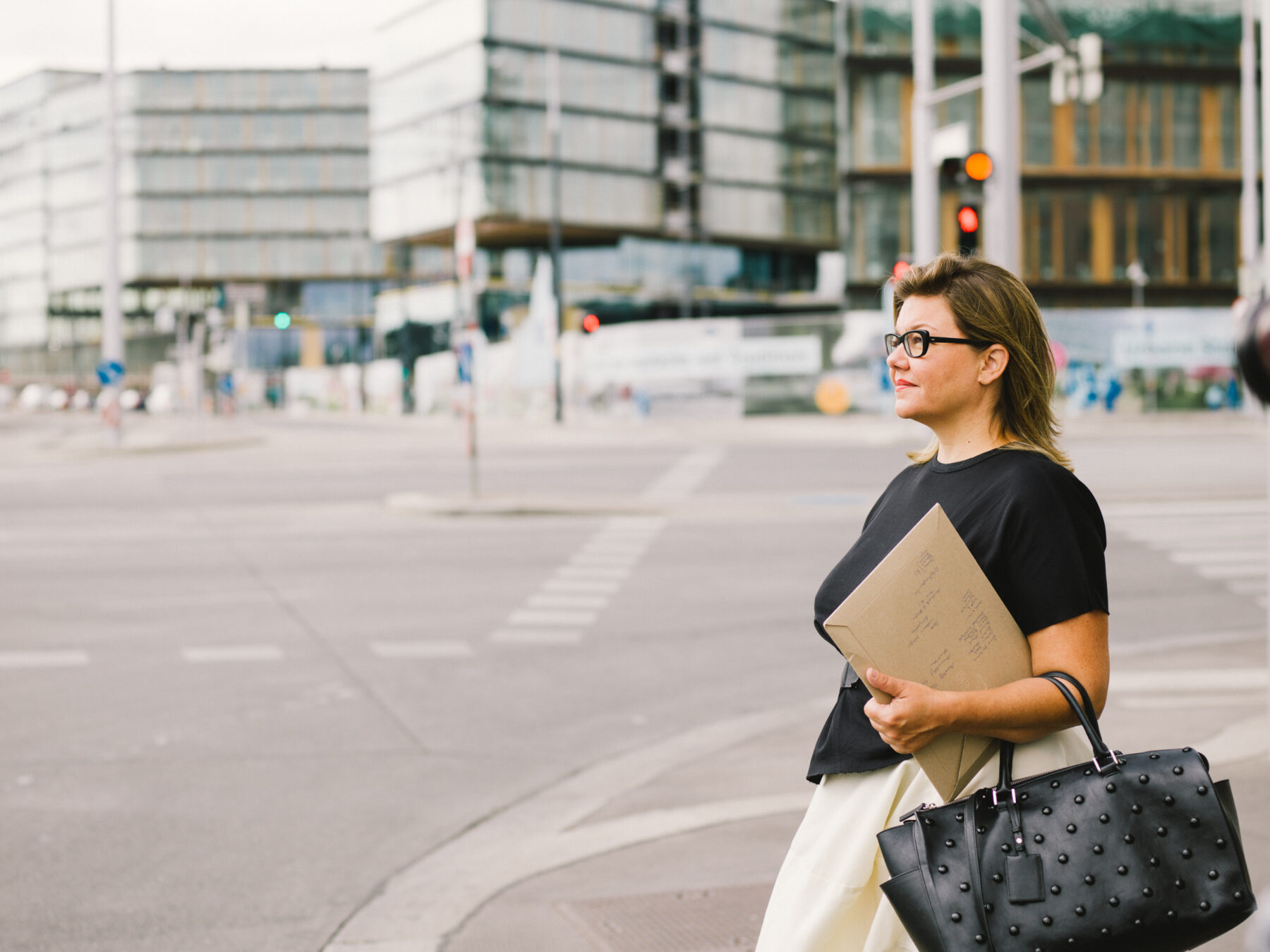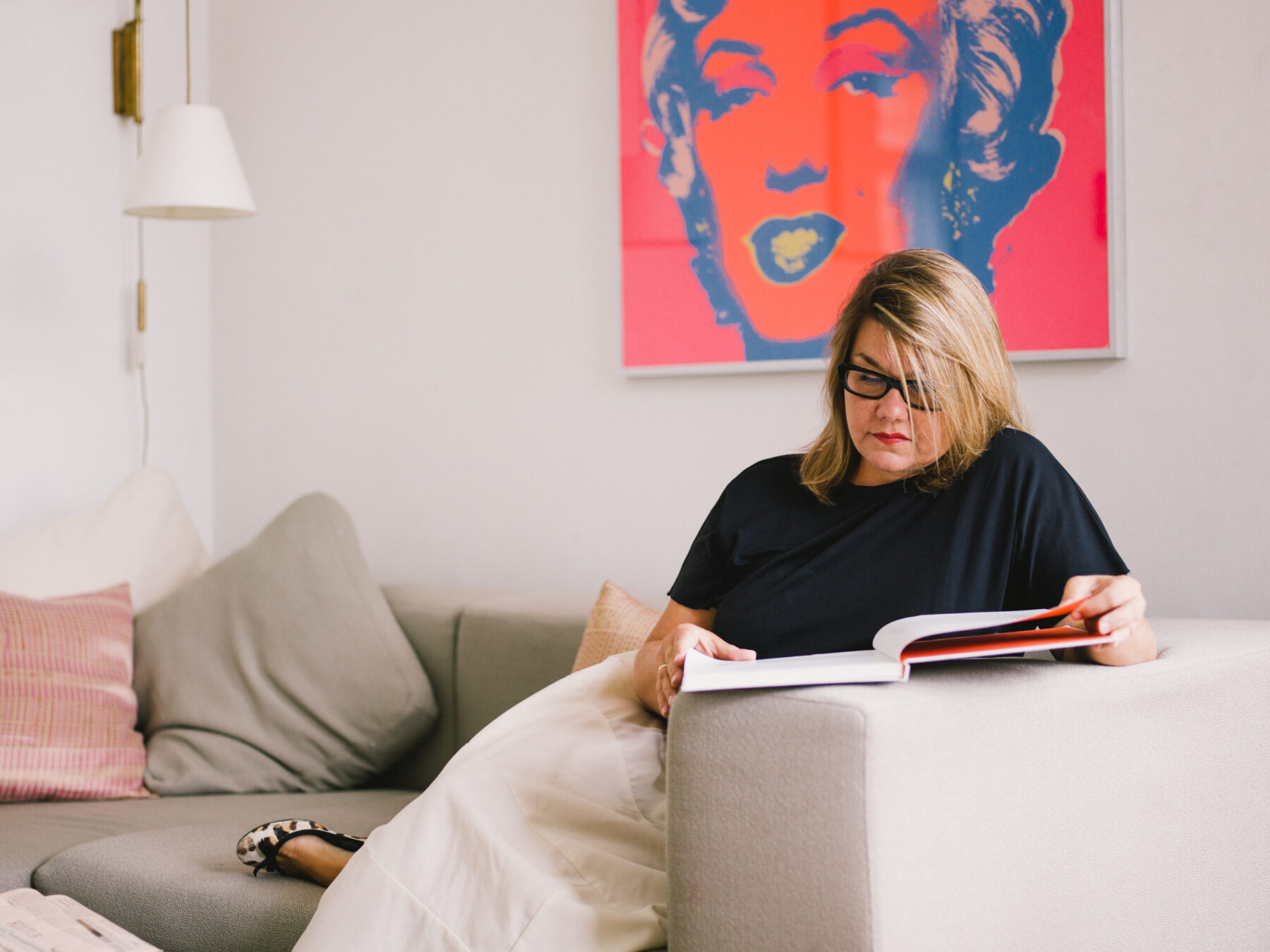Design isn’t just surface and pure aestheticism, design also comes from within. With Vienna Design Week, founded by Lilli Hollein, special attention is given to several aspects simultaneously: at the festival she shows not only the finished products, but she also strives to make their development process transparent.

In addition she would like to offer an international platform where manufacturers and designers can meet. Especially close to her heart is the juxtaposition of ancient and modern – because it is just this that makes the capital of Austria so endearingly charming.
Anyone who visits Lilli understands immediately why she’s hung on to the apartment from her childhood. Bright rooms, double doors and herringbone parquet lend it a gracefully historic atmosphere, suited to its special location in the center of the city. The view out of her living room windows offers a cross-section of Viennese architectural history. In an interview she explains to us why she’s so passionate about living and working in Vienna.
Lilli’s Apartment in Wieden



-
You studied design. Today, instead of working creatively yourself, you are a mediator. How did this come about?
During my studies I began to write for newspapers and to curate exhibitions. At the time, I realized that I liked the role of mediator better. Also, I noticed that others were more passionate about design than I was. I have the curatorial eye and the corresponding drive.
-
Is there a educational mandate for this role?
Absolutely. To make design available to a broad public – this is an important objective of the festival. I want to show the people everything that design can be. Especially those who consider design to be superficial and reduce it to mere aestheticism. At the moment, many people in Austrian companies still think this way.
-
Many products are sold through their design, for example the iPhone next to you. Do Austrian companies have to develop a stronger awareness of design?
There’s a design ideology behind Apple that’s not only a part of the company philosophy, but is the founding principle. There’s nothing comparable in Austria. There aren’t many here who have realized that design doesn’t just mean beautification, rather, it really makes a product better. I hardly know any businesses that have lost something through good design.



-
In Viennese history there are quite some successful examples: Kolo Moser and his designs for Thonet, for example. Are you attempting to connect to this great design history through the festival?
Not only that, we want to continue the story. When Tulga Beyerle, Thomas Geisler and I founded the festival, we knew that this city didn’t just have a rich inheritance, but also great contemporary potential. The only thing missing were good connections and a lively exchange.
-
And Design Week aims to fill that gap?
Yes, from the beginning designers from all over the world met at design week. But from very different disciplines. For example, exactly as the Vienna Business Agency’s work as a sponsoring institution has enabled us to cooperate with manufacturers and designers, we invite international designers in the context of the “Labor” program to develop something with local craftsmen.
-
The themes of “City Work” or “Passion Ways” are also part of the program. This sounds like a very broad notion of design.
Our program allows for experimentation. We don’t want to be a pure product design festival, and also not a fair. Because we also show the process of creation.
-
This year the festival was in the 3rd district. Why there?
This district has the diversity of a big city. There’s the elegant embassy district, an area of urban development, an industrial area and a residential area. I think it’s important to highlight this diversity with design week. That’s why every year we focus on a different district.
-
When did you become conscious of design?
I understood it relatively early: It’s not just how it looks or functions. It doesn’t happen just like that. Climbing up a staircase can be much more comfortable when the step depth or height is planned accordingly. A child understands this. When I was small, I decorated shoe boxes and sketched plans for my childhood room. But it was unfairly never implemented.
-
Do you want to pass this sensibility on to your daughter?
I passionately love my job, it certainly resonates with my upbringing. My daughter will be seven soon and has experienced the work at the festival for a few years. It’s not hard to show her what’s important to me.






-
So it happens fortuitously?
I don’t have to teach her, but I support her curiosity. I believe that she already has a good analytical view. Children approach things from the foundation and design professionals should do the same: How does it work? Can you break it? How does it look from the inside? Why is there a leftover part when I reconfigure it – isn’t that better?
-
Is that your definition of good design?
Not only. But the impulse to go to the beginning and to ask: What do I want from this? What does it say to me and what can it do? That’s where good design begins for me.
-
I’ve read that Ettore Sottsass is one of your favorite designers. What excites you about him?
Sottsass represents the full range of design quality. His industrial design work is impressive because he really changed and improved the products: aesthetically, functionally – and the really special achievement – emotionally. Valentine, the red typewriter! In a cross section of his extensive work his signature is always evident, whether it’s ceramics, furniture or industrial products. That’s remarkable. Through my family I’ve known him since my childhood. He was exactly as impressive as he was endearingand, naturally, my first exhibition as a curator was dedicated to the theme of Memphis – a design group founded by Sottsass.


-
Is there an everyday object that represents good design for you?
There are a number of well-designed products that appeal to me. But I wouldn’t name them as prime examples. An art historian doesn’t ask someone what their favorite painting of all time is. It’s hard when you’re working with it day-to-day, you value different things for different qualities, some are outstanding in every way and exist for a long time. But with every new phase in life there are new things that are particularly close to my heart.
-
But are there also poorly designed things that mean something to you? Something like a lava lamp, for example?
Something of bad taste doesn’t mean that it’s badly designed! The perception of design depends on different aspects: functionality, aesthetic and, indeed, individual emotions play a role as well. Maybe it’s a gift from someone that I care about.
-
Which items in your apartment would you never separate from?
From the chair by the Bouroullec brothers that I’m sitting on right now. It exudes a timeless approachability yet it looks like an alien. The nice thing is that I can sit in it together with my daughter to read to her.
-
Although you’ve often worked in other cities and could have stayed there, you’ve never left Vienna. Why? What is the charm of Vienna for you?
Vienna is so wonderfully endearingly slow and some things will simply never change. Vienna must not constantly renew itself, but there’s room for it. With certain deliberation, as we say.
-
That’s charmingly expressed.
(laughs) It’s clear that in Vienna the historical is consciously protected. Therefore, it can be hard to establish something new. Once you’ve overcome resistance, the response is all the more positive. Somehow I find that charming. I simply like the city like crazy.
-
What would you show people to share this charm with them?
Fortunately with my festival I can share the diverse sides of Vienna: the valuable past and a modern future.
Lilli’s Office in Leopoldstadt






-
That’s why there are many different locations in the program?
Yes, it’s about the different faces of the city, design is just one of them. Whether it’s a journalist or someone who is Vienna-born: Everyone gets to know the city anew. How often is one in a workshop in the 14th district and doesn’t know the streets around them?
-
Design week also attracts tourists. What’s their impression?
Excitement! They get to know the real city. This is lost on the normal tourist paths. But it’s like that in every city.
-
The 1st district is probably not your favorite district then?
Yes! I love the 1st district. Like all Vienna-born, I always still say “in the city,” when I’m talking about the 1st district. It’s not so easy to get out of your head, exactly like the feeling that everything outside this circle is half a world away. It’s a deeply Viennese attitude.
-
Which areas in Vienna lie especially close to your heart?
It’s a shame that it’s increasingly polished and gentrified, like the Naschmarkt and the 16th district. I want to see someone there again grumpily shouting out the window in a tank top with a decent Viennese saying – or in whatever language.









